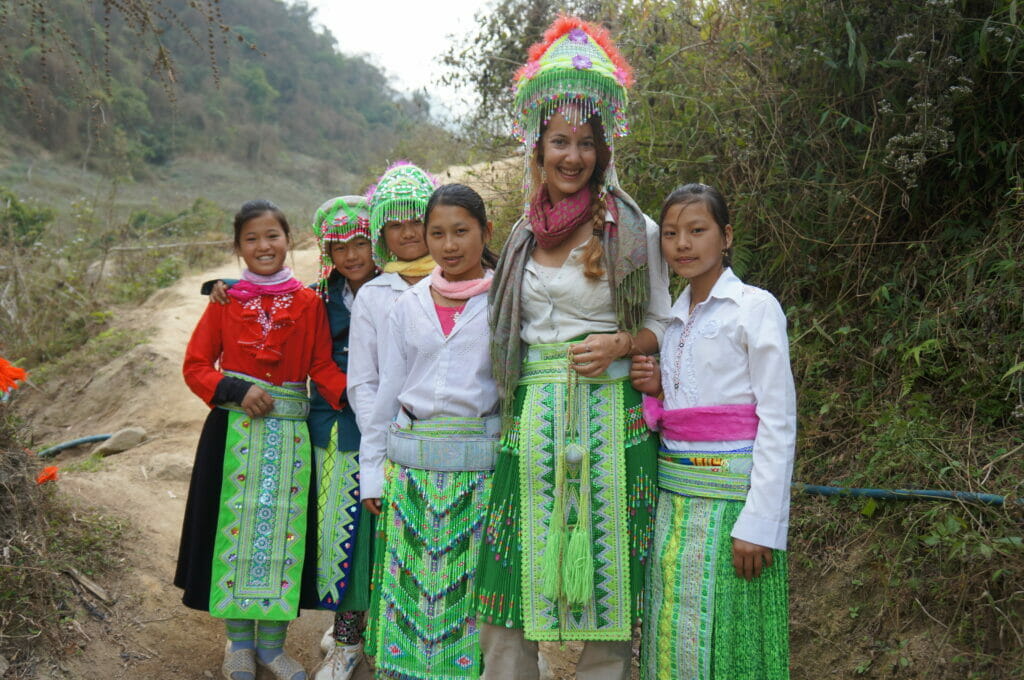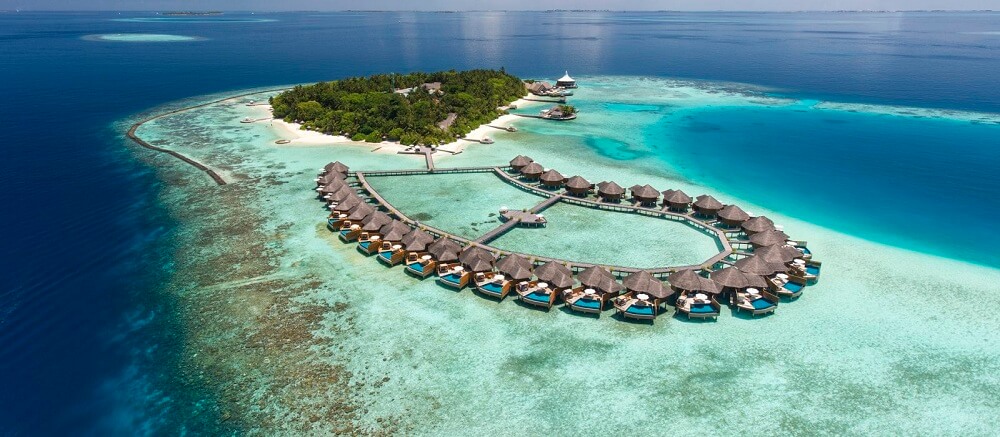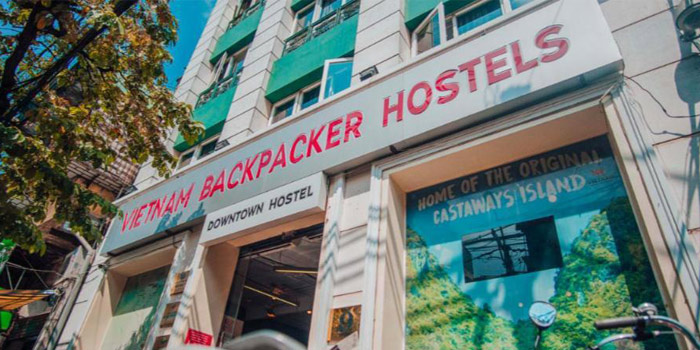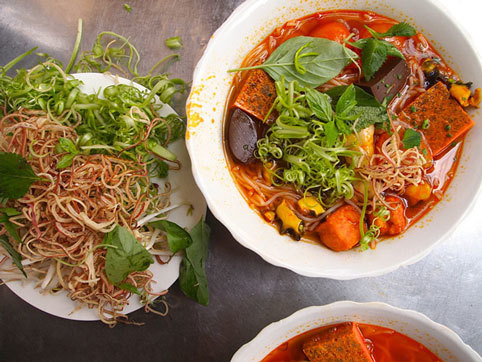
Vietnam on a Budget – A Backpacker’s Dream Adventure
Vietnam on a Budget: A Backpacker’s Paradise

Vietnam is a haven for budget-conscious travelers, offering incredible value without sacrificing experiences. From street food that costs less than a dollar to budget hostels with vibrant social scenes, every aspect of your journey can be tailored to fit a shoestring budget.
Why Vietnam is a Budget Traveler’s Dream
Vietnam’s affordability is unmatched. A meal at a local street stall can cost as little as $1–$2, while a comfortable hostel bed ranges from $5–$10 per night. Even mid-range experiences, like a Halong Bay cruise or a motorbike tour through the Hai Van Pass, remain accessible to backpackers.
The country’s well-developed tourist infrastructure ensures that budget travel doesn’t mean roughing it. Open-tour buses, affordable domestic flights, and cheap train tickets make navigating Vietnam both easy and economical.
Stretching Your Dong: Money-Saving Tips
To maximize your budget, eat where the locals eat. Street food is not only cheap but also an authentic way to experience Vietnamese culture. Avoid touristy restaurants in Old Quarter Hanoi or Bui Vien Street in Ho Chi Minh City—prices are often inflated.
Bargaining is expected in markets and for services like motorbike rentals. A polite but firm approach can save you significant amounts. Additionally, traveling during the shoulder seasons (May–June or September–October) means fewer crowds and lower prices.
Free and Low-Cost Experiences
Vietnam is filled with free or nearly free attractions. Wander through Hanoi’s Old Quarter, explore Hoi An’s lantern-lit streets, or hike the terraced rice fields of Sapa without spending a dime. Many temples and historical sites charge minimal entrance fees (often under $2).
For a small fee, you can join free walking tours in major cities, where local guides work for tips. These tours provide deep cultural insights while keeping costs low.
Staying Safe in Vietnam: Essential Tips for Backpackers

Vietnam is generally safe, but like any travel destination, awareness is key. Petty theft and scams can occur, particularly in tourist-heavy areas. However, with a few precautions, you can enjoy a hassle-free journey.
Common Scams and How to Avoid Them
One frequent scam involves taxi drivers refusing to use the meter or taking unnecessarily long routes. Always use reputable companies like Mai Linh or Vinasun, or opt for ride-hailing apps like Grab.
Another trick is the “broken meter” excuse, where drivers claim their meter isn’t working and charge an inflated fare. Insist on using the meter or negotiate the price before getting in.
Staying Safe on Motorbikes
Motorbike accidents are a leading cause of injuries among travelers. If you rent a bike, ensure it’s from a reputable shop, wear a helmet, and avoid driving at night. Many backpackers opt for guided motorbike tours instead of self-driving for added safety.
Health and Hygiene Precautions
Street food is delicious but can sometimes lead to stomach issues. Stick to busy stalls where food turnover is high, and avoid raw vegetables that may have been washed in tap water. Carry hand sanitizer and drink only bottled or filtered water.
Crafting Unforgettable Memories: Vietnam Backpacking Itinerary

A well-planned itinerary ensures you experience Vietnam’s highlights without rushing. Whether you have two weeks or two months, balancing cities, nature, and cultural sites is key.
The Classic North-to-South Route
Start in Hanoi, where history and modernity collide. Explore the Old Quarter, visit the Ho Chi Minh Mausoleum, and take a day trip to Ninh Binh’s stunning karst landscapes.
Next, head to Sapa for trekking among rice terraces, then cruise through Halong Bay’s limestone islands. Continue south to Hoi An for its ancient charm, then relax on Da Nang’s beaches before ending in Ho Chi Minh City and the Mekong Delta.
Off-the-Beaten-Path Alternatives
For those seeking less touristy spots, consider Ha Giang’s epic motorbike loops, Phong Nha’s breathtaking caves, or the serene Con Dao Islands. These destinations offer unique experiences away from the crowds.
Balancing Time and Budget
Spending more time in fewer locations reduces transportation costs and allows deeper exploration. For example, staying a week in Hoi An lets you take cooking classes, cycle through rice fields, and enjoy the beach—all without breaking the bank.
Transportation Hacks: Navigating Vietnam Affordably
Vietnam’s transport network is extensive and budget-friendly, but knowing the best options saves both time and money.
Open-Tour Buses vs. Trains
Open-tour buses (like those from SinhTourist) are cheap and flexible, allowing hop-on-hop-off travel between major stops. However, they can be cramped and less comfortable than trains.
Trains offer more space and scenic views, especially on the Reunification Express. Sleeper cabins are a great option for overnight journeys, though tickets should be booked in advance.
Motorbike Adventures
Renting a motorbike (around $5–$10 per day) is a thrilling way to explore, but only recommended for confident riders. The Hai Van Pass between Hue and Da Nang is a must-ride route, offering coastal vistas.
Domestic Flights for Long Distances
For long hauls (e.g., Hanoi to Ho Chi Minh City), budget airlines like VietJet Air offer deals as low as $30–$50 if booked early. This can save valuable travel time.
Budget Accommodation in Vietnam: Hostels and Guesthouses
Vietnam’s accommodation options cater to every budget, from dorm beds to charming homestays.
Best Hostels for Social Travelers
Hanoi: “Hanoi Backpackers Hostel” is a lively spot with free beer hours and organized tours.
Hoi An: “Tribee Kinh Hostel” offers free bikes and cooking classes.
Ho Chi Minh City: “The Common Room Project” blends coworking and social spaces.
Homestays for Authentic Experiences
In rural areas like Sapa or the Mekong Delta, homestays provide cultural immersion. You’ll sleep in traditional stilt houses and share meals with local families for around $10–$15 per night.
Booking Tips for the Best Deals
Use platforms like Hostelworld or Agoda to compare prices. Many hostels offer discounts for longer stays or walk-in bookings. Always check reviews for cleanliness and safety.
Delicious and Cheap: Exploring Vietnamese Cuisine on a Shoestring
Vietnamese food is a highlight of any trip, and eating like a local keeps costs low.
Must-Try Street Foods
- Pho: Vietnam’s iconic noodle soup, best enjoyed at small street stalls.
- Banh Mi: A French-Vietnamese baguette sandwich, often under $1.
- Bun Cha: Grilled pork with noodles, a Hanoi specialty.
Avoiding Tourist Traps
Look for stalls with long lines of locals—this signals fresh, high-quality food. Avoid places with English-only menus, as prices are often higher.
Cooking Classes on a Budget
Many hostels and local restaurants offer affordable cooking classes (around $10–$15). These include market tours and hands-on lessons in making dishes like spring rolls or pho.
Vietnam’s Must-See Destinations for Backpackers
From north to south, Vietnam’s diversity ensures endless adventures.
Hanoi: The Historic Capital
Explore the chaotic charm of the Old Quarter, visit the Temple of Literature, and sip egg coffee at Café Giang.
Halong Bay: A Natural Wonder
Opt for a budget overnight cruise ($50–$80) to kayak through limestone caves and swim in emerald waters.
Hoi An: The Lantern City
Cycle through rice paddies, get tailor-made clothes, and release lanterns on the Thu Bon River.
Ho Chi Minh City: The Dynamic South
Visit the War Remnants Museum, crawl through Cu Chi Tunnels, and experience the city’s vibrant nightlife.
Avoiding Common Tourist Traps: A Guide to Savvy Backpacking
Tourist-heavy areas often come with inflated prices and scams.
Overpriced Tours and Souvenirs
Book tours through reputable agencies, not street touts. Compare prices online before committing.
Fake “Local” Experiences
Some “traditional” villages are staged for tourists. Research authentic homestays and community-based tourism initiatives.
Essential Packing List for a Vietnam Backpacking Trip
Packing light but smart ensures comfort and convenience.
Clothing for All Climates
Lightweight, breathable fabrics for the heat, plus a light jacket for cooler northern regions.
Health and Safety Gear
- Reusable water bottle with a filter.
- Basic first-aid kit including diarrhea medication.
- Mosquito repellent with DEET for rural areas.
Connecting with Local Culture: Respectful Travel in Vietnam
Respect goes a long way in enhancing your experience.
Learning Basic Vietnamese Phrases
Even simple greetings (“Xin chào”) earn smiles and better interactions.
Dress Modestly at Religious Sites
Cover shoulders and knees when visiting temples or pagodas.
Conclusion
Vietnam is a backpacker’s dream—cheap, safe, and unforgettable. With careful planning, an open mind, and a sense of adventure, you’ll leave with memories (and a bank account) intact. Whether cruising Halong Bay, savoring street food, or motorbiking through mountain passes, Vietnam promises an epic journey without the hefty price tag.




